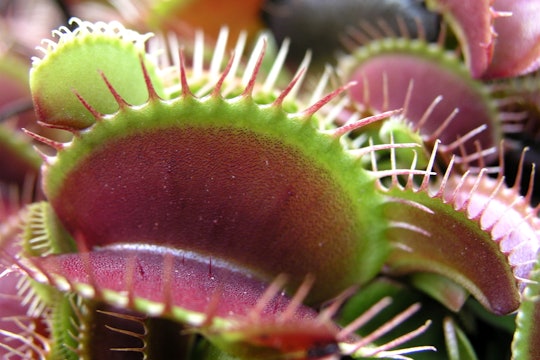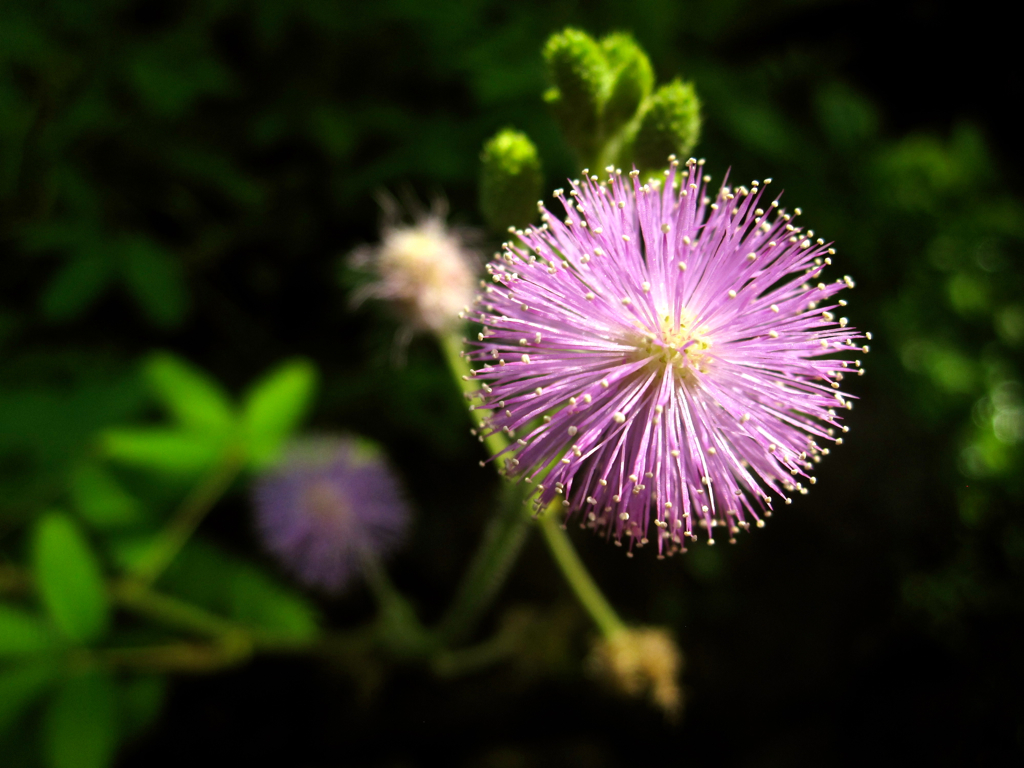
David Midgley / Flickr
Plants are not conscious, whether you can 'sedate' them or not
A New York Times story is a case study in what can go wrong in translating science
About two weeks ago, the New York Times ran a story on a scientific paper about how anesthetics stopped motion in plants with a provocative headline for readers and scientists: “Sedate a Plant, and It Seems to Lose Consciousness. Is It Conscious?”
The article considers the idea at length, talking about "signs of plant intelligence" and comparisons with animals.
But the answer, unreservedly, is “no.”
The question of plant consciousness, intelligence, or cognition, has excited and exasperated scientists for more than a century. The very first suggestion of conscious plants was raised by the acclaimed Indian physicist and biologist, J.C. Bose, who first demonstrated in the early 20th century that plants moved in response to various stimuli. Bose is more famously known for his pioneering work on the modern radio, but in a series of experiments reported in his book, Response in the Living and Non-Living, he performed very similar research to what the Times described.

Radish drugger
In 1902, Bose treated a radish with chloroform and recorded how the plant stopped responding to physical vibrations in a manner analogous to animal nerve cells. He presented these and other results as proof of a “parallelism” between plant and animal "nervous" systems, and later even claimed that plants could “feel pain.” In the 2017 paper recently described in the press, scientists reported, in much more detail, a similar depression in the movements of the Venus fly-trap and the touch-me-not plant (Mimosa pudica) upon exposure to diethyl ether and lidocaine, two varieties of anesthetic.
While the scientific paper, published in the Annals of Botany last December, claimed that the purpose of the experiment was to study how anesthetics work on cellular mechanisms, media reports concentrated on “plant consciousness” and alleged similarities between plants and humans.
Conscious or not
In fact, Stefano Manusco and František Baluška, the lead scientists behind the 2017 paper, are famous in botany circles for espousing the idea of “plant intelligence.” In a 2006 article in the journal Trends in Plant Sciences, they and other colleagues announced a new field of inquiry called “plant neurobiology.” That article was controversial, prompting a sharply written rebuttal by 36 renowned plant biologists, who suggested the field was “founded on superficial analogies and questionable extrapolations” – strong words for an academic debate.
Scientifically and methodologically speaking, I cannot find much to fault with either Bose’s work or the recent paper. But the majority of plant scientists would, I think, agree that to draw any conclusion about “consciousness” from this experiment, as the Times would have us do, is tricky at best. The Times was all but alone among top-tier outlets in framing this paper as a question of plant "consciousness." Ars Technica kept to the simple facts of cells and anesthesia, and Scientific American clearly ended its story, "No one is saying that plants are conscious."
The Times, for its part, only quoted one scientist – Baluška – without presenting any outside or dissenting voices. It also did not include caveats about longstanding skepticism toward the idea of plant "consciousness." Instead, it filled the report with leading hints and slim qualifications, such as "it's all so animal-like" and "if electrical activity is being disrupted by anesthetic in plants, too, causing them to 'lose consciousness,' does that mean, in some way, that they are conscious?"
Even Baluška would not go so far, telling the paper: “No one can answer this because you cannot ask them."

Mimosa pudica
JC7001 / Flickr
Many scientists flinch at the language used by the Times. For one, definitions of consciousness and intelligence are hotly contested even when talking about humans and animals. Second, plants lack a nervous system, which has long seemed requisite for discussion of animal-like behavior. Third, while the way in which many anesthetics function in humans is still a mystery, there is no reason why they or other chemicals shouldn’t induce a response in any organism, let alone plants.
Yes, anesthetics cause a loss of consciousness in humans, but consciousness is defined almost exclusively in the context of humans and our close evolutionary relatives – it's debated even regarding social animals like dolphins and orcas. To be conscious is to be aware of one’s environment and of one’s self, by a common definition – but is awareness enough?
Not for most scientists. Consciousness, according to three brain researchers writing last year in Science Advances, also seems to involve a degree of “metamemory,” which is to say that conscious beings “actually know that they know or that they do not know.” Consciousness in humans also seems to require the ability to “distinguish self-generated versus externally driven representations" – an imagination. These qualities remain unproven in plants. And since they seemed to be tied firmly to specific hardware in the animal brain, we are unlikely to find them anytime soon.
Seeing people
We should be wary, too, of anthropomorphizing. It is an entirely human tendency to think of non-human life as we do each other – way back in the 1670s, Anton von Leeuwenhoek, the first person ever to see microscopic life, called tiny swimming bacteria “animalcules." You can see these animalizing habits in names (catfish, waterbears), and in some of biology's more serious errors, like when scientists falsely assigned sex to mating bacteria.
It’s not unexpected then that when scientists like Bose see evidence of plants moving, they’re tempted to read animal-like functions like “intelligence” or “consciousness.” However, the fact that a plant behaves in what looks to us to like an animal does not make it so. As Sophien Kamoun, a prominent plant biologist at the Sainsbury Laboratory in Britain, pointed out on Twitter, if some bacteria similarly respond to chemicals like diethyl ether (which they do), would the Times run a headline like: “Sedate a Bacterium, and It Seems to Lose Consciousness. Is It Conscious?”.

Conscious or not
NIAID / Flickr
Most scientists believe there is no such thing as an unworthy question, but "plant neurobiology" can try our patience. Kamoun, for example, called the Times article “silly" compared to more interesting plant research, but silliness can damage the public’s understanding of science, with unpredictable results. Though Bose’s experiments contained a lot of important results, for instance, his over-interpretation of the data later inspired a pseudoscientist, Cleve Backster, to claim plants had mystical abilities of extra-sensory perception. Scientists criticized Backster’s theories, but they were widely reported by a credulous media. They then gained some public acceptance, most prominently by L. Ron Hubbard, the founder of Scientology.
I fear similar responses to research by “plant neurobiologists,” much perfectly legitimate but overly hyped – especially coming from newspapers of high regard – will further propagate false notions about intelligent plants. That would do our leafy neighbors a great disservice.
A literal field worth studying
The Times at least started strong, writing, "plants don’t get enough credit.” I couldn’t agree more. Plant biology is under-funded, under-staffed and too often under-subscribed in universities. We are understandably a self-absorbed species, demanding biomedical research and fast results. And I understand that newspapers can can draw eyes to plant research with hyped headlines.

Hype plant
But plants are worth studying for their own sake, remarkable in countless ways without having to measure them against human yardsticks like “intelligence” or “consciousness."
Some plants can move with almost animal-like speed; but the majority of plants can't, making them even more amazing. Being sessile (unable to move) has forced plants to evolve extraordinary adaptations to survive a planet of roving predators. Most plants are super-efficient factories, producing a mind-boggling array of defense chemicals against bacteria, fungi, herbivores, and humans. These include compounds that we use as medicines (morphine, quinine), stimulants (caffeine, nicotine) and flavorings (the spice capsaicin). Even more amazingly, some plants, when under attack by a herbivore, are able to exude a perfume that then invites a predator to hunt that herbivore – a molecular version of “the enemy of an enemy is my friend."
And of course, all plants transform sunlight, water and air into sugar and oxygen. Surely that’s magic enough.



When materials scientists talk about designing ‘smart,’ ‘adaptive,’ or ‘programmable’ materials, they mean configuring the physical or chemical structure so that the material responds to external stimuli. The adjective ‘intelligence’ is used from time to time, but it's never mistaken with ‘consciousness.’
Your article also brings to mind the confusion about what artificial intelligence means or doesn’t mean. The historian Noah Yuval Harari defines intelligence as the ability to solve problems, and consciousness as the ability to feel things. From his recent book, Homo Deus:
Can we call plants ’intelligent’ — so long as neither scientists or the public confuse ‘intelligence’ with ‘consciousness’?
Are plants better thought of as sophisticated material structures, with the ability to solve problems by processing flows of energy, matter, and information to and from the environment? In other words, should we think of them as physicists might: natural, physical computers?
Or should we just drop all analogies, and think about plants on their own terms?